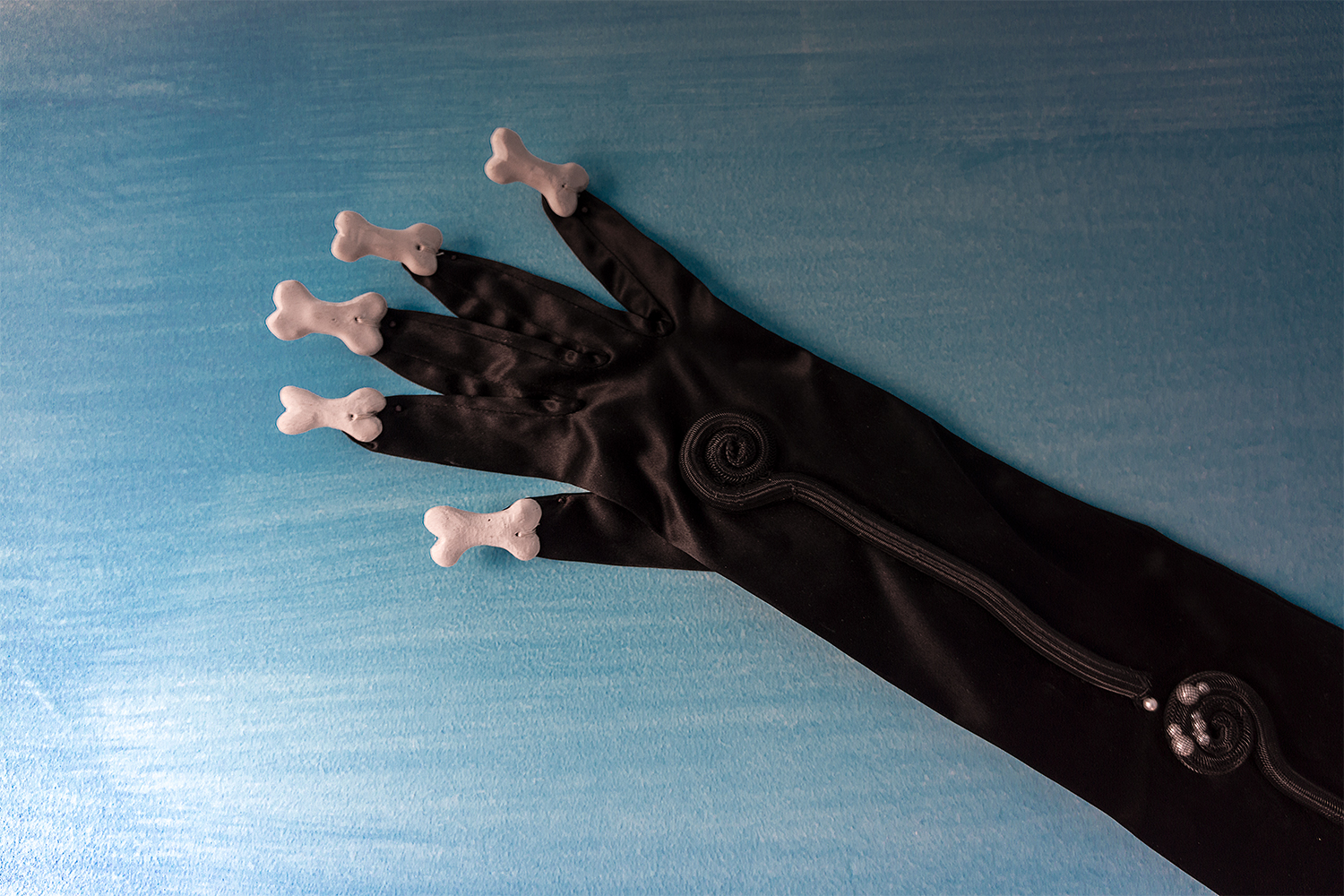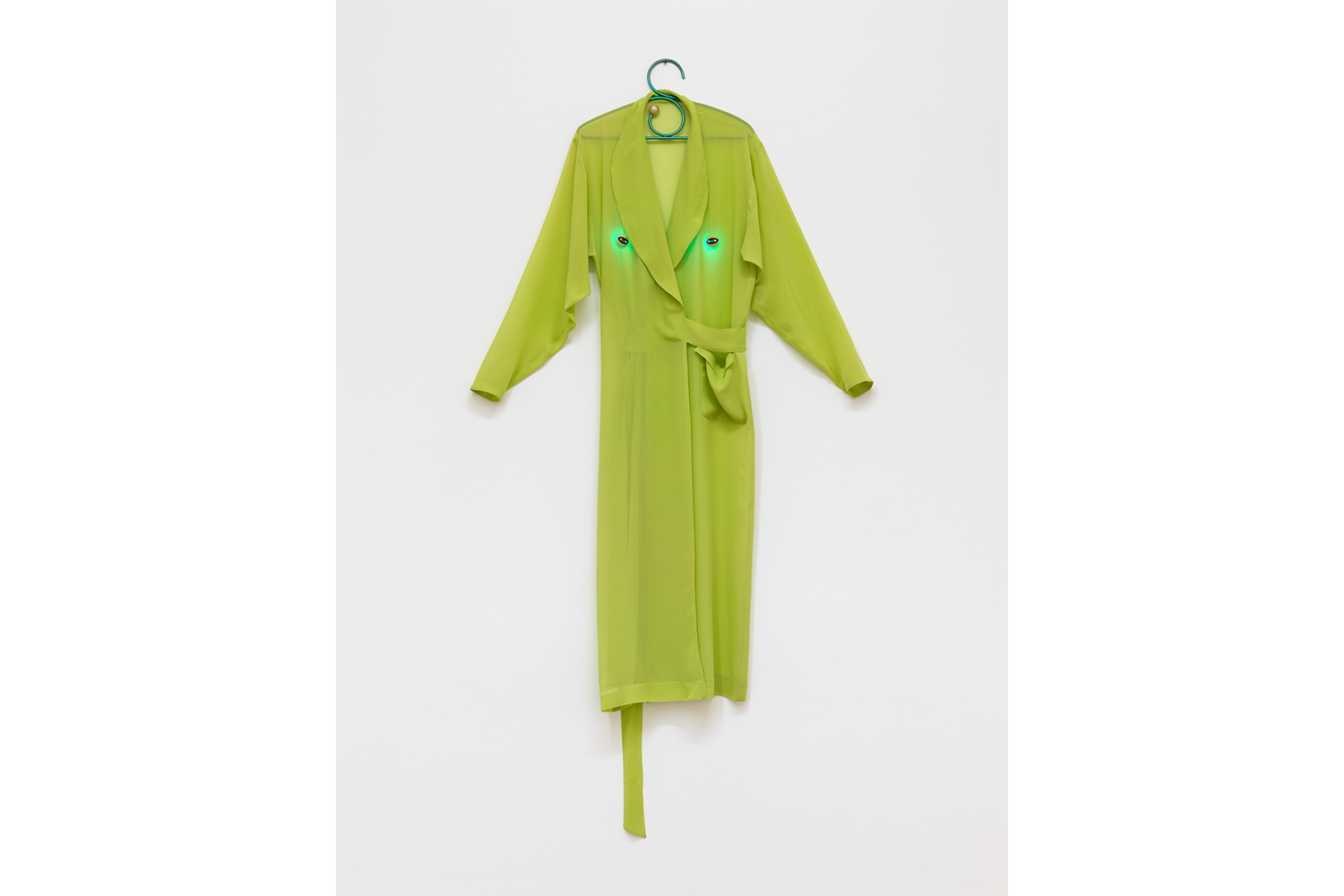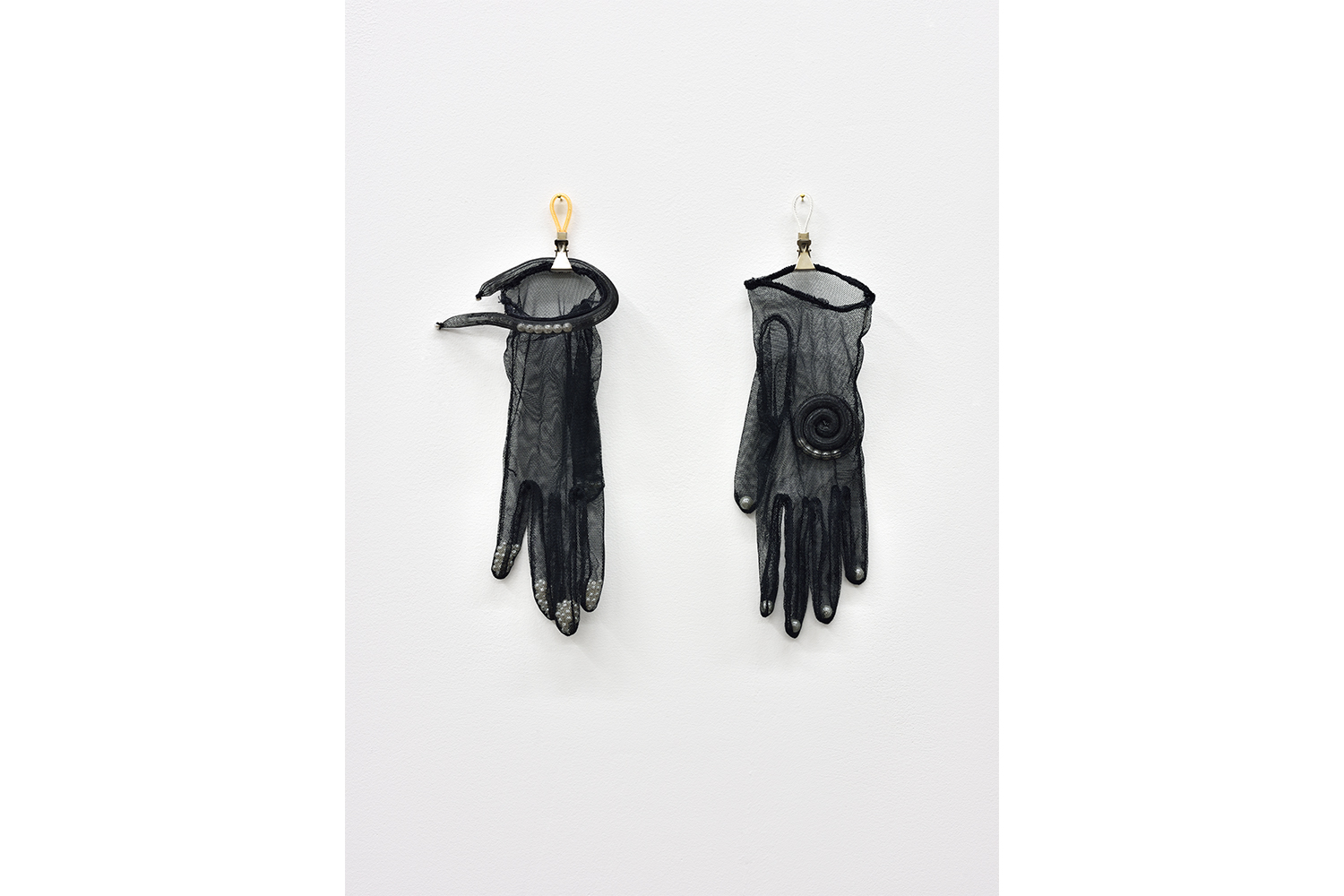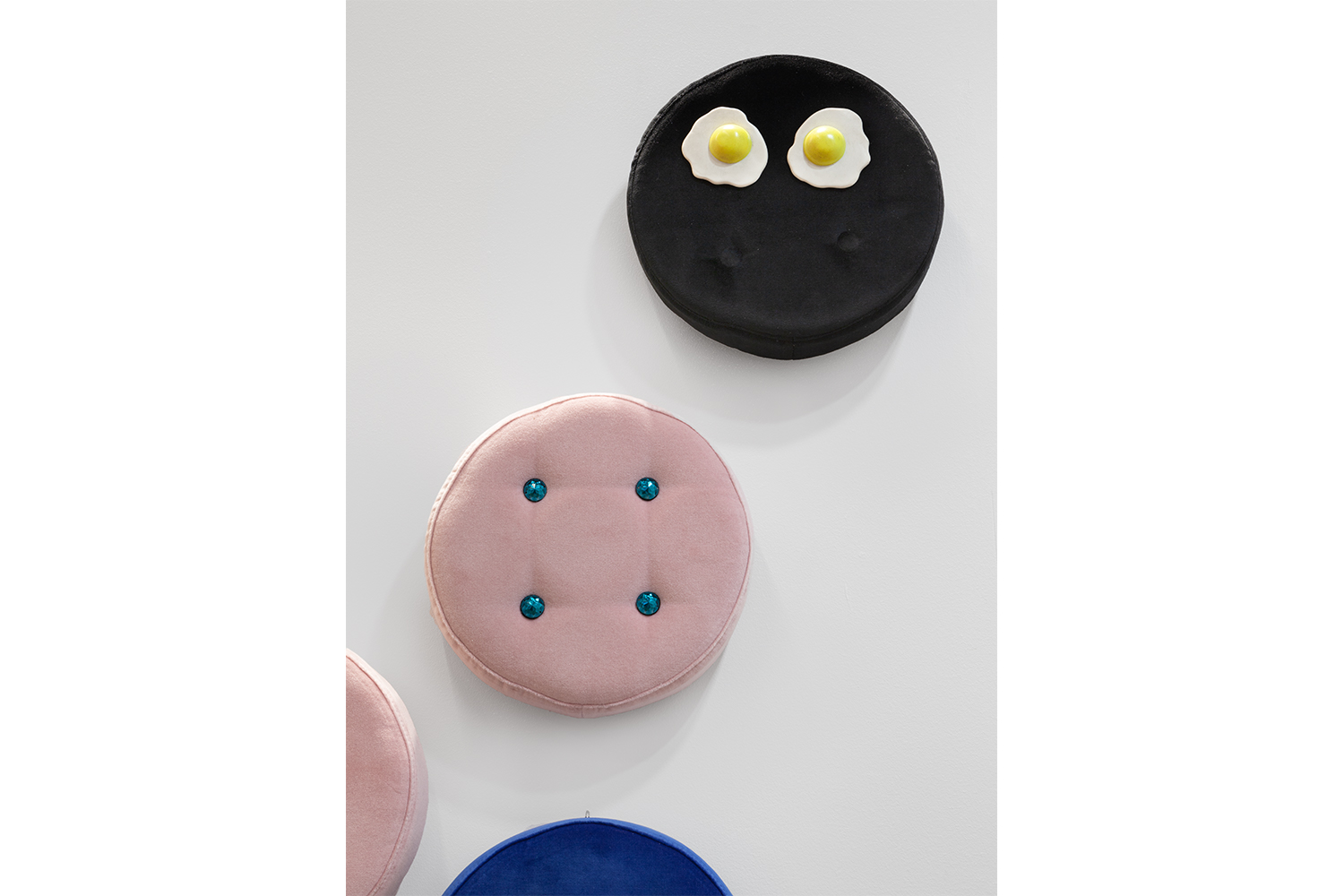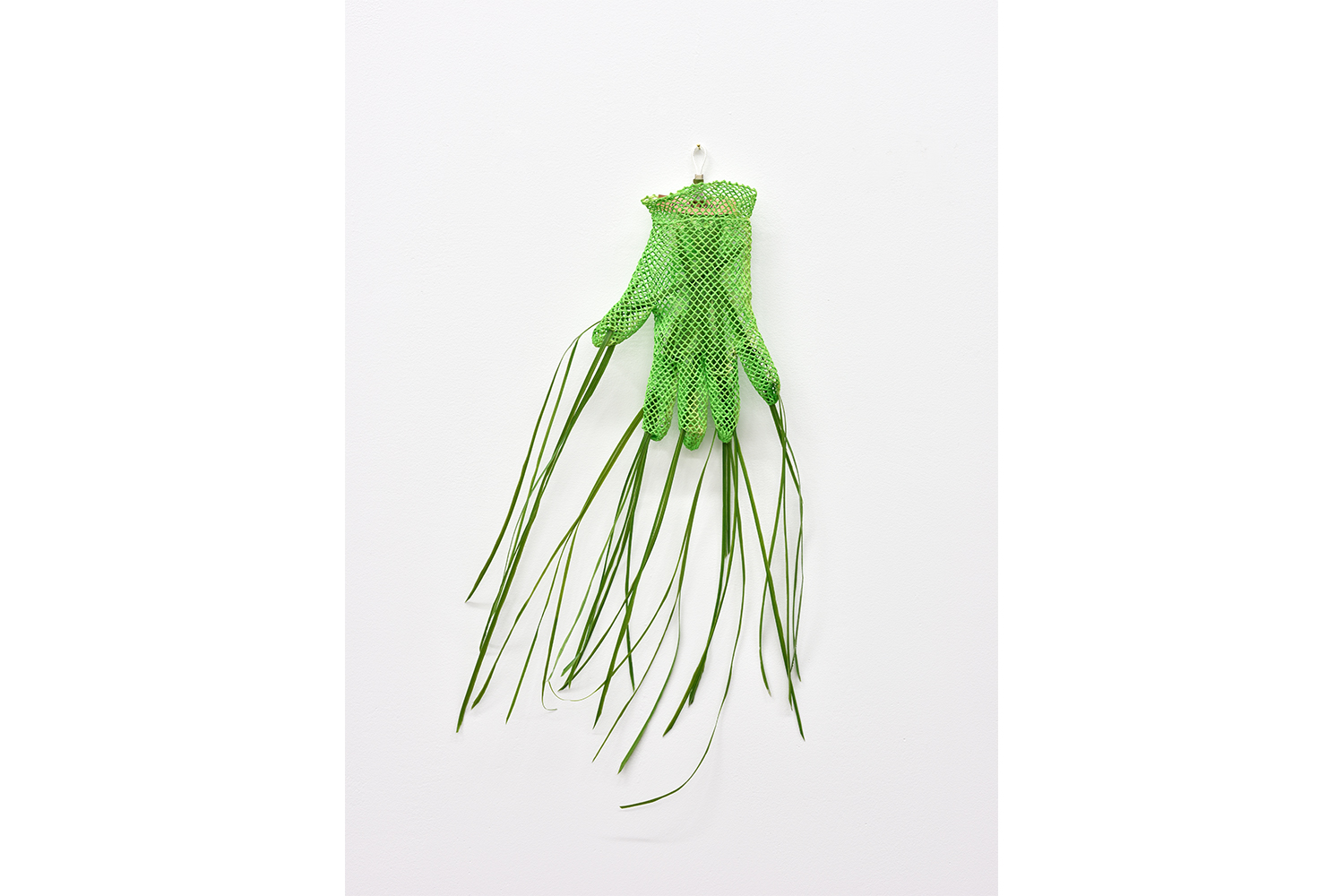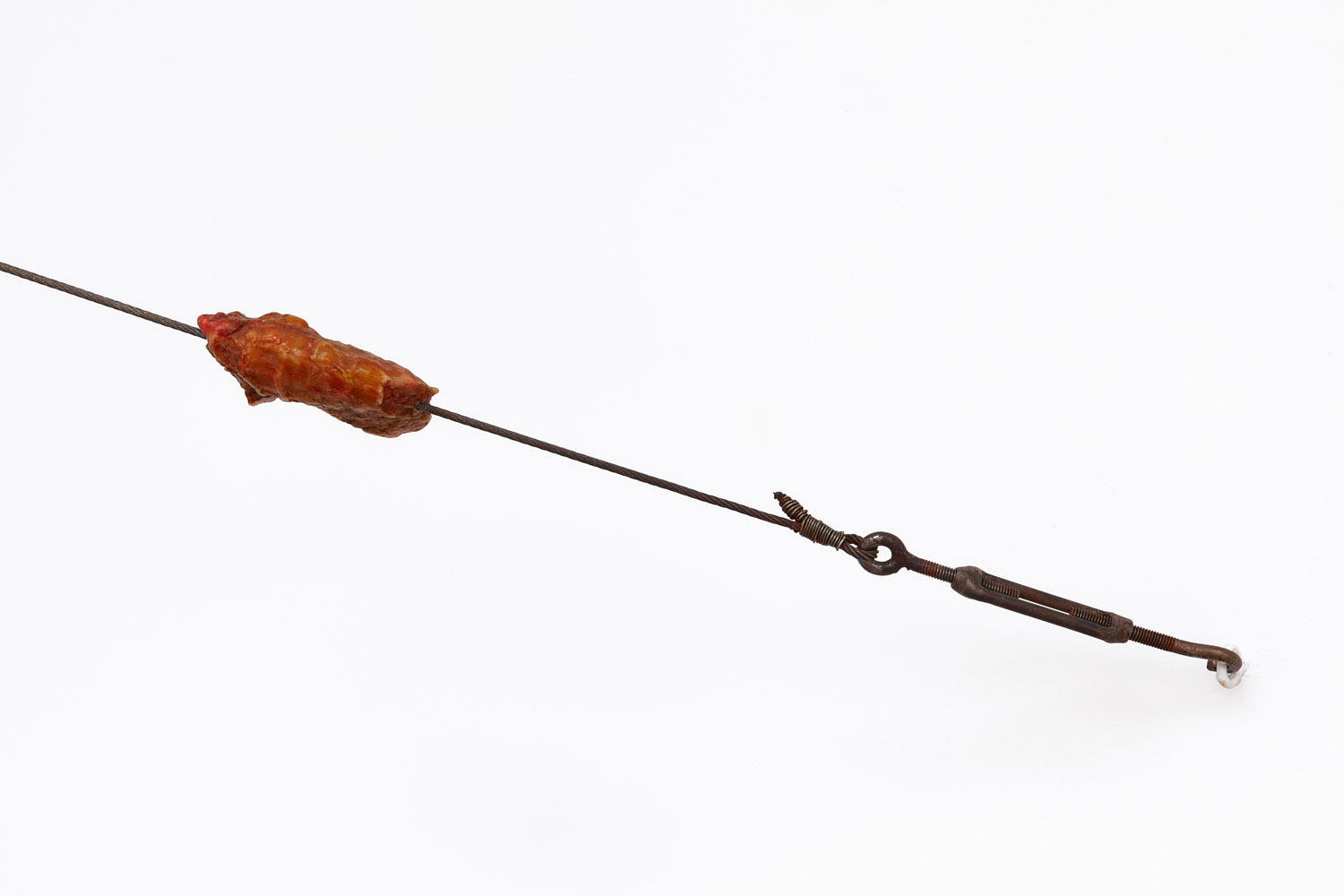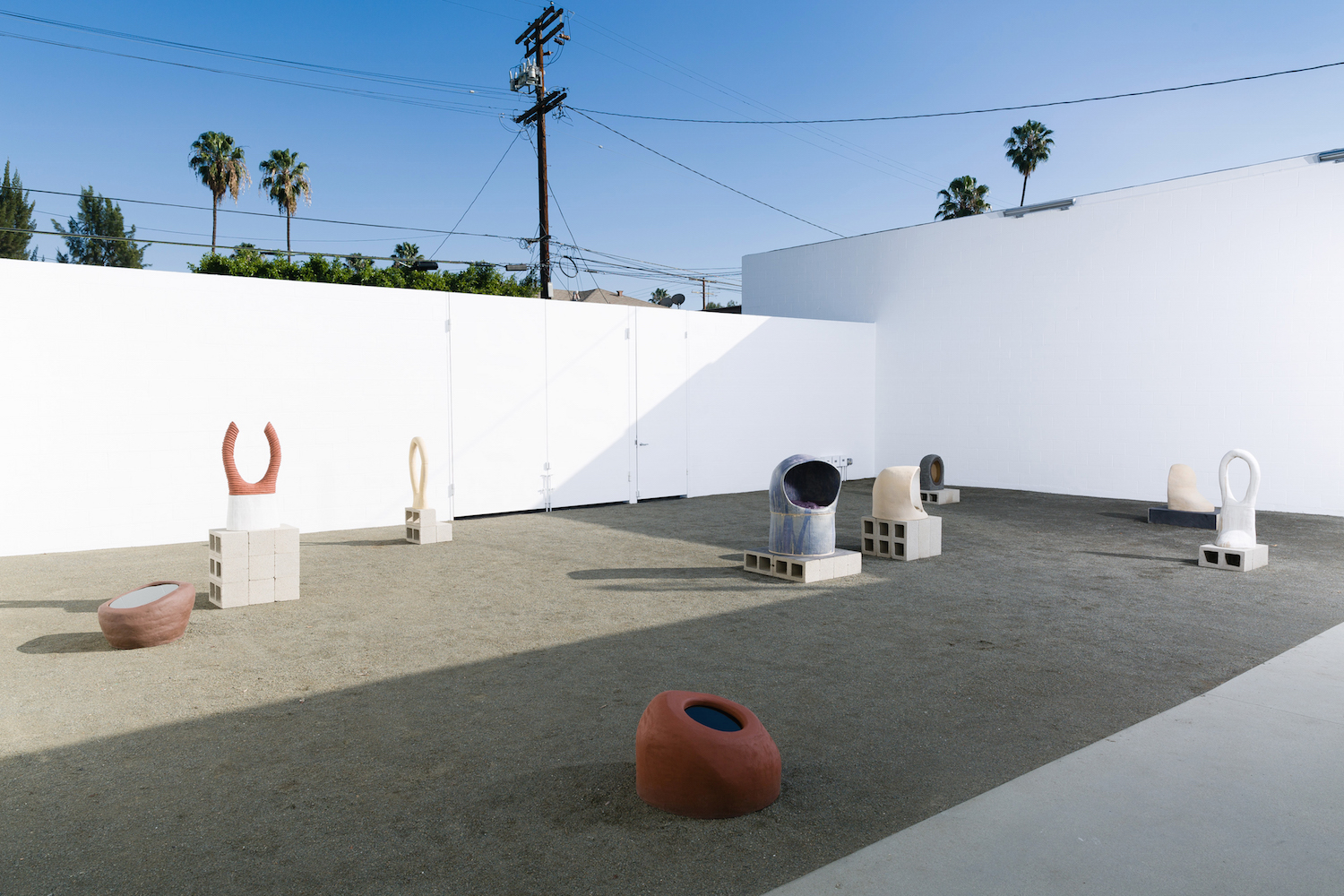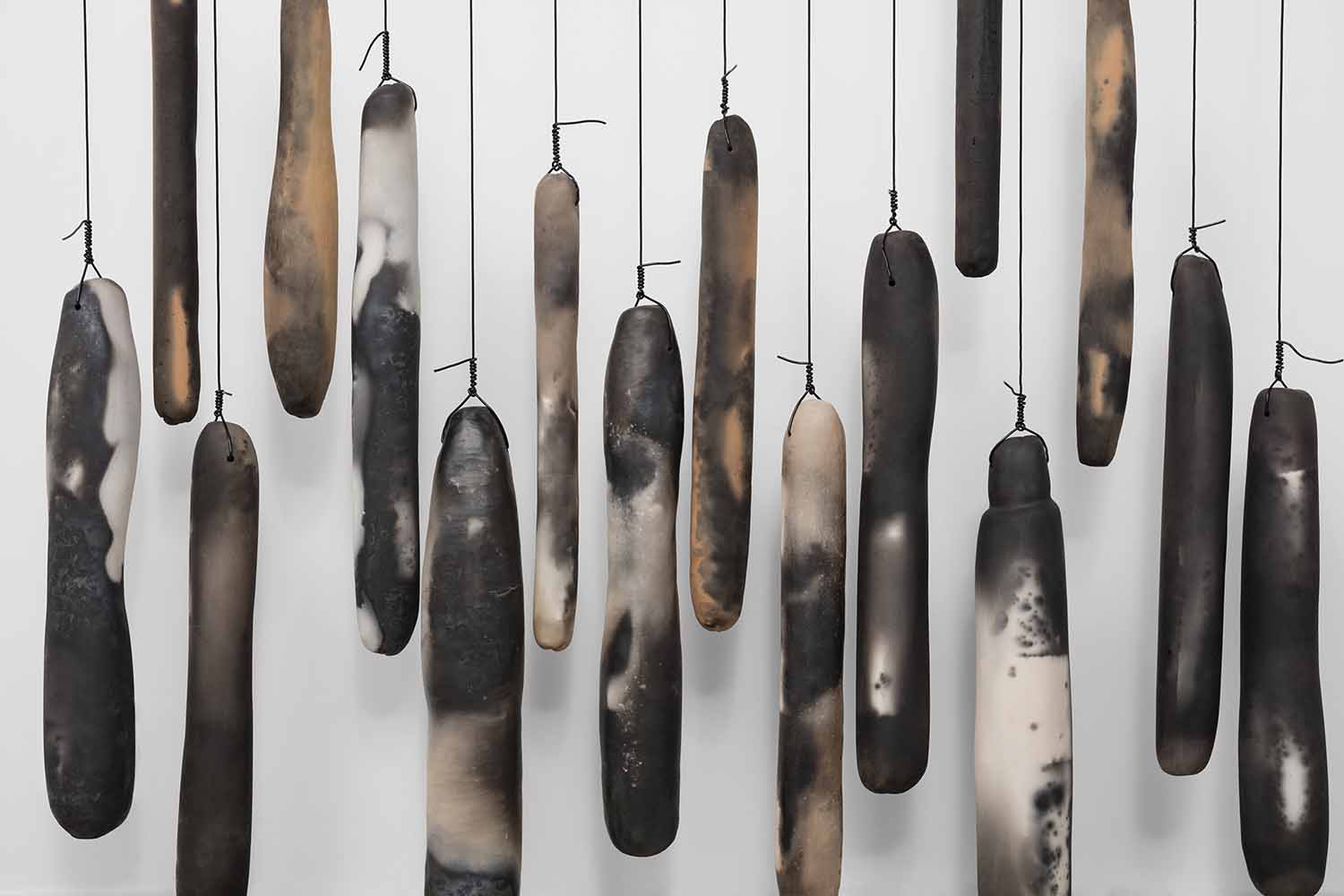I encounter Cinzia Ruggeri’s Colombra (1997) in an exhibition curated by Melanie Ohnemus in Vienna and I am sent into a sort of shock: I have just finished a daybed in black velvet myself, human-sized and shaped like the chalk outline of a dead body at a crime scene. To create the shape, I laid down on the floor of our Lower East Side apartment in New York City, exactly on the threshold where floor tiles meet wood boards, denoting a more symbolic than practical division of domestic life.
Colombra is different but shares in the notion of an absent body and, with it, a potential for past violence. A strangely elongated figure — shadow limbs prolonged perhaps by a low setting sun or any source of light — lies propped or thrown against the wall. Its spindly arms are lifted above the head and its hands cross each other at the wrists. What the object qua velvety upholstered sofa indicates first is designed rest, a leisurely posture, self-aware posing even. But quite immediately the focal point of conjuncture — the wrists — suggests a darker notion. The long umbral character, suspended from bound wrists, has slumped down the wall, lifeless. At this point, despite the fact that Colombra is indeed finished like an object of potential use, the primary relation to design as a field of intuitive handling is lost. Colombra reminds me a lot of my favorite Giacometti bronze, Woman with Her Throat Cut (1932). An insect-like creature with bodily features that, with the help of the title, can be seen as female, lies on the ground, its limbs twisted and convoluted as in agony. Giacometti’s formal abstraction in the tradition of surrealist uncanny similitude links a purported head to a spoon and arms to leaves. This allows for a strange beauty that is not patently vulgar — a dead body — but more akin to the dramatic final writhing of life in an animated world, cast forever still.
Milan, September 2021
On a short trip to the city, squeezed between visits to museums, we go to a luxurious albeit musty vintage store where I hope to find some of Ruggeri’s designs. Two years after her death, and after the rapid international rediscovery of her practice and its inclusion within the canon of contemporary art, now showcased in museums and galleries, the idea of finding a choice piece, by chance, not yet appraised by the rarefying breath of the art market — a dress perhaps still a dress — seems thrilling. I have no idea what I am looking for, however, since I do not know what Ruggeri’s “fashion” looks like. We leave treasureless, with me wondering whether I consider any of her works, although wearable, desirable to be worn.
Art’s voracious appetite for fashion is premised on the problematic promise of an if not remedied then at least simplified relationship to objects. Paradoxically, commodification and commerce are perceived as less shrouded and therefore more authentic, and the semiotic triangle is suspended in deference to immediacy, despite and regardless of meaning. A questionable surplus is created by alleging a crossing of boundaries — from art to fashion as much as from fashion to art. I have myself often taken recourse to this quasi emancipatory aspect of fashion in order to come to terms with my problems with signification in art making. Fashion turns abject when we attempt to describe its meaning; it is most potent in a space of animation. Many texts about the meaning of fashion culminate in a strange esotericism. We are urged to believe in it, nonetheless. We are promised an innate radicality that is not calculable.
Philipp Ekardt describes two differing conceptualizations of the fashionable form in his most recent book, Benjamin on Fashion (2020). He juxtaposes Walter Benjamin’s understanding of the passive body clothed in obstinate materials, no doubt indebted to Elsa Schiaparelli’s surrealism, with German fashion journalist Ilse Grund’s definition of elegance in dress as one of animation — one in which a bystander can forget the reality of the worn garment. Using obstinacy and fluidity here as parameters for a differentiation between fashion as animated garment and sculpture as image, I would like to polemically locate Ruggeri’s objects in the latter. They depend as much on their author’s textual addition to unfold their meaning as on their precise staging. The poetics of Stivali Italia (1986) is not to be found in the proverbial passer-by wearing a pair of green velour boots fashioned like the Italian mainland. The installation setting stages the boots as independently mounting a Kartell Upper stepladder, with the renegade islands Sardinia and Sicily suggested by unwieldy clutch bags affixed flat to the wall nearby. The technological provenance of these sculptures is indeed clothing. Clothing’s imitation of the body adds to the conceptual drama. But the potential here lies in the specific image.

